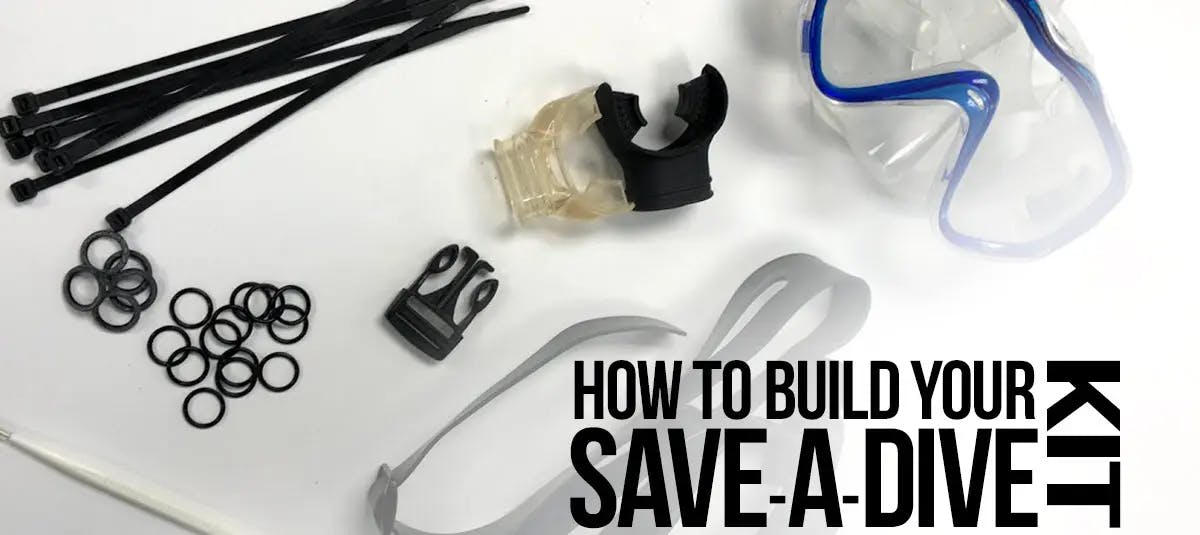Free Shipping on orders of $49+ | Signup for Direct Rewards
Free Shipping on orders of $49+ | Free Store Pickup | Signup for Direct Rewards
Free Shipping on orders of $49+ | Signup for Direct Rewards
Free Shipping on orders of $49+ | Free Store Pickup | Signup for Direct Rewards
"My fin strap broke." "My tank o-ring is missing." "My daughter's BCD isn't holding air." Whether you're a new, experienced, or professional diver, at one point or another you'll encounter a reason to need a save-a-dive kit. It can seem difficult and overwhelming at first to decide what to add to your save-a-dive kit at any level, but it is actually fairly simple. You’ll want to consider a few things. Consider for a moment Murphy's Law. Then, think about the dives you’ve done thus far. Finally, look at the gear you have and which parts of it you might need to save during a day of diving. Check below to get our tips on what you might want to include in your save-a-dive kit.

Build Your Own Save-A-Dive Kit — Be Ready!
As a new diver, you’re excited to dive more and build your gear. One of the best things you can do is create your own Save-A-Dive Kit — a small box of spare parts and tools to fix common problems and save your dive.
Start with a small dry box that’s easy to carry. Tip: Get a slightly bigger box than you think you need — you’ll fill it up as you go!
Even if someone else has spares, having your own kit means you’re always prepared. One day, the dive you save may be your own!
Your Save-A-Dive Kit helps you fix small gear problems and makes you a more confident, self-reliant diver. You’ll also be able to help your dive buddies when something breaks.
As you dive more, your kit will grow to match your style of diving. Watch what happens on dives, learn from others, and keep adding useful items. Just remember — only fix things you know how to handle, and always ask for help if you’re unsure.